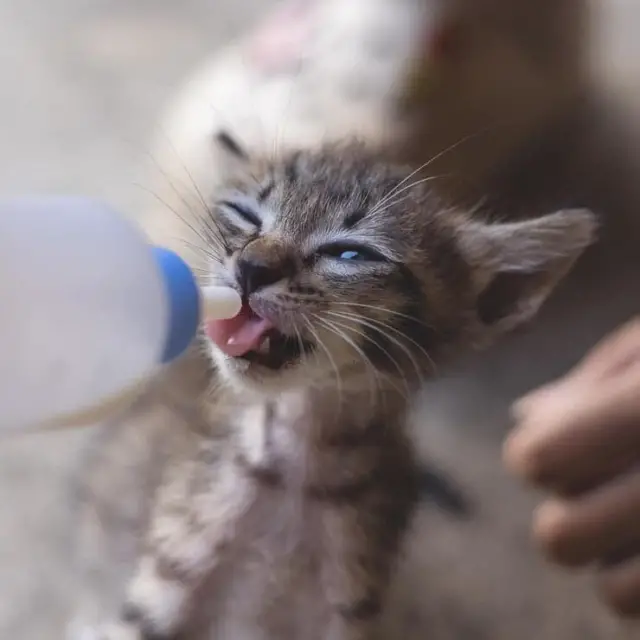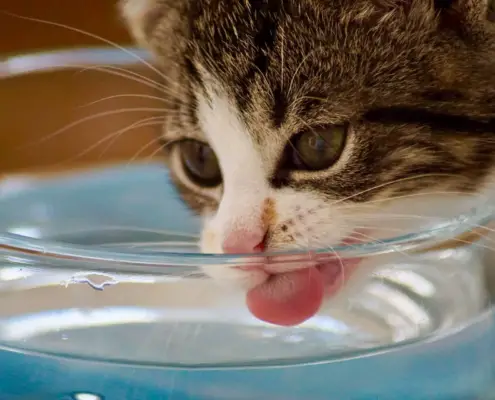
Cats, as much as we adore their playful and independent nature, are not immune to health issues. One area that may often be overlooked is brain disorders. These conditions can significantly impact a cat’s quality of life, as well as the well-being of their pet parents. Understanding brain disorders in cats is essential for recognizing and addressing any potential issues.
Brain disorders in cats can stem from various causes, such as infections, trauma, tumors, or congenital abnormalities. These disorders affect the central nervous system and can lead to a range of symptoms, including seizures, changes in behavior, coordination difficulties, and even paralysis. While brain disorders in cats are relatively uncommon, it is crucial to be aware of the signs and seek veterinary care promptly if any concerns arise.
Common Brain Disorders in Cats
Although brain disorders in cats are not as prevalent as other health issues, there are several conditions that pet parents should be aware of. One common brain disorder is encephalitis, which refers to inflammation of the brain. This condition can occur due to viral, bacterial, or fungal infections, and it often leads to neurological symptoms such as seizures and disorientation.
Another brain disorder seen in cats is hydrocephalus, a condition characterized by an accumulation of cerebrospinal fluid in the brain. This fluid buildup can cause an increase in intracranial pressure, leading to symptoms like head enlargement, unsteady gait, and behavioral changes. Hydrocephalus is more commonly observed in certain cat breeds, such as Persians and Siamese.
Additionally, brain tumors can also affect cats, although they are relatively rare. These tumors can arise from various types of brain cells and may cause symptoms such as seizures, vision problems, and personality changes. Prompt diagnosis and treatment are crucial when it comes to managing brain tumors in cats.
Symptoms and Signs of Brain Disorders in Cats
Recognizing the symptoms and signs of brain disorders in cats is vital for early intervention. Some common indicators include seizures, which can manifest as sudden convulsions or repetitive movements. Cats with brain disorders may also experience changes in behavior, such as increased aggression, confusion, or disorientation. Other signs to watch out for include difficulty walking or balancing, abnormal eye movements, and changes in appetite or drinking patterns.
It is important to note that the symptoms of brain disorders in cats can vary widely depending on the specific condition and its severity. Some cats may exhibit subtle signs initially, while others may experience more pronounced neurological deficits. If you notice any unusual behavior or suspect a brain disorder in your cat, consult with a veterinarian for a comprehensive evaluation.
Diagnosing Brain Disorders in Cats
Diagnosing brain disorders in cats requires a multi-faceted approach, involving a combination of physical examinations, medical history review, and diagnostic tests. The veterinarian will begin by conducting a thorough physical examination to assess the cat’s overall health and neurological status. They will observe the cat’s behavior, check for any abnormalities in reflexes or coordination, and perform a detailed examination of the eyes and ears.
To further evaluate the brain, diagnostic imaging techniques such as magnetic resonance imaging (MRI) or computed tomography (CT) scans may be recommended. These imaging tools provide detailed images of the brain structure, allowing the veterinarian to identify any abnormalities or lesions. Additionally, cerebrospinal fluid analysis may be performed to assess for signs of infection or inflammation.
In some cases, a brain biopsy or genetic testing may be necessary to establish a definitive diagnosis. These procedures involve collecting a small sample of brain tissue or performing genetic analysis to identify specific abnormalities or underlying causes. It is crucial to work closely with your veterinarian to determine the most appropriate diagnostic approach for your cat’s condition.
Treatment Options for Brain Disorders in Cats
Once a diagnosis is established, the veterinarian will develop a tailored treatment plan based on the specific brain disorder affecting your cat. The treatment options can vary depending on the underlying cause and severity of the condition. In some cases, medication may be prescribed to manage symptoms, control seizures, or reduce inflammation.
For certain brain disorders, such as hydrocephalus, surgical intervention may be necessary. Surgery aims to alleviate the fluid buildup and restore normal cerebrospinal fluid flow within the brain. This can help relieve symptoms and improve the cat’s overall quality of life. It is essential to discuss the potential risks and benefits of surgery with your veterinarian to make an informed decision.
In cases of brain tumors, treatment options may include surgery, radiation therapy, or chemotherapy. The choice of treatment depends on various factors, including the tumor type, location, and the cat’s overall health. Your veterinarian will guide you through the available options and recommend the most suitable course of action to manage the tumor.
Managing Brain Disorders in Cats at Home
While medical intervention plays a crucial role in managing brain disorders in cats, there are also steps that pet parents can take at home to support their feline friends. Creating a safe and comfortable environment is vital for cats with neurological conditions. Minimizing potential hazards, such as sharp objects or steep stairs, can help prevent accidents and injuries.
Establishing a consistent routine can also be beneficial, as cats thrive on predictability. Regular feeding, playtime, and sleep schedules can help reduce stress and provide a sense of security. Additionally, providing enrichment activities, such as puzzle toys or interactive games, can help stimulate the cat’s mind and maintain their cognitive function.
It is important to closely monitor your cat’s behavior and symptoms and report any changes to your veterinarian. Keeping a journal or record of observations can assist in tracking the progression of the brain disorder and evaluating the effectiveness of the treatment plan. Open communication with your veterinarian is crucial for ongoing management and adjustments to the treatment regimen.
Expert Insights on Caring for Cats with Brain Disorders
To gain further insights into the care of cats with brain disorders, we reached out to renowned veterinary neurologist Dr. Emily Thompson. According to Dr. Thompson, “Early detection and intervention are key when it comes to brain disorders in cats. Any sudden changes in behavior or neurological symptoms should be promptly addressed by a veterinarian. Collaboration between the pet parent and the veterinary team is crucial for successful management.”
Dr. Thompson also emphasized the importance of a comprehensive approach to care. “Managing brain disorders in cats requires a multidisciplinary approach, involving veterinary neurologists, internists, and supportive care from pet parents. Regular follow-up visits and adherence to the treatment plan are vital for optimizing the cat’s well-being.”
Practical Tips for Pet Parents of Cats with Brain Disorders
Caring for a cat with a brain disorder can be challenging, but with the right approach, it is possible to provide them with a fulfilling life. Here are some practical tips for pet parents:
- Establish a routine: Cats with brain disorders benefit from a stable and predictable routine. Maintain consistent feeding, play, and sleep schedules to provide a sense of security.
- Create a safe environment: Remove any potential hazards, such as toxic plants or sharp objects, to prevent accidents and injuries. Consider using baby gates or other barriers to restrict access to dangerous areas.
- Provide mental stimulation: Engage your cat in interactive games or puzzle toys to keep their mind active. This can help maintain cognitive function and prevent boredom.
- Monitor behavior and symptoms: Keep a journal to track any changes in behavior or symptoms. This information will be valuable for your veterinarian in assessing the effectiveness of the treatment plan.
- Stay in touch with your veterinarian: Regular follow-up visits and open communication with your veterinarian are essential for ongoing management. Discuss any concerns or observations and follow their guidance closely.
Resources and Support for Pet Parents of Cats with Brain Disorders
Caring for a cat with a brain disorder can be overwhelming, but there are resources and support available to help pet parents navigate this journey. Online communities, such as forums or social media groups, provide a space for sharing experiences and seeking advice from fellow cat owners who have faced similar challenges.
Additionally, organizations like the Feline Veterinary Medical Association (FVMA) and the American Association of Feline Practitioners (AAFP) offer resources and educational materials on various feline health topics, including brain disorders. These organizations can provide reliable information and connect pet parents with veterinary professionals specializing in feline neurology.
Conclusion
Navigating brain disorders in cats can be a complex and emotionally challenging journey for pet parents. Understanding the common disorders, recognizing the symptoms, and seeking veterinary care promptly are crucial steps in ensuring the well-being of your feline companion. With the right diagnosis, treatment, and ongoing management, cats with brain disorders can lead fulfilling lives, supported by the love and dedication of their pet parents. Remember to consult with your veterinarian for expert guidance tailored to your cat’s specific needs.
If you enjoyed my article, I would appreciate you sharing it with your network.

Sima Ndlebe
Sima writes for CatBuzz. He is interested in Cats, Health and Fitness, and Entrepreneurship.
Published: 11 October 2023
Related Articles
Disclaimer
The content found on CatBuzz.org is presented on an "as is" basis and is intended for general consumer information and education purposes only. Any utilization of this information is voluntary and solely at the user's own risk.
None of the articles or content should be regarded as, or used in place of, veterinary medical advice, diagnosis, or treatment. The information provided on the website is purely for educational and informational intentions and should not be considered a substitute for professional guidance from a veterinarian or other qualified expert. The articles are designed to inform consumers about veterinary healthcare and medical matters that may impact their cat's daily life. It should be noted that this website and its services do not constitute the practice of any form of veterinary medical advice, diagnosis, or treatment. CatBuzz.org explicitly disclaims any liability for any direct or indirect damages or losses that may arise from the use of or reliance on the information contained within the content.
Consumers must consult a veterinarian, veterinary specialist, or another qualified veterinary healthcare provider when seeking advice regarding their cat's health or medical conditions. It is important not to ignore, avoid, or postpone seeking medical advice from a veterinarian or other qualified veterinary healthcare provider solely based on information obtained from this website. If you believe that your cat may be experiencing a medical issue or condition, it is imperative to promptly contact a qualified veterinary healthcare professional.



